 |
|
|
|
|
|
Warm
greetings from Sri Lanka...!!!
The land of
a thousand breathtaking spectacles. As you journey through these pages,
I invite you to enjoy the lush foliage of the country side, the mountains
full of tea gardens, the patchwork quilt like rice paddies, the wholesome
village life, the never ending stretches of coconut fringed beaches, the
exquisite underwater coral scrapes, cascading waterfalls, colorful festivals
and pageantry, magnificent ancient cities, nearly half as old as time,
the flowers in all their glory...nature's bounty in such abundance!! Most
of all, enjoy the images of Sri Lanka's most treasured resource...her
people.
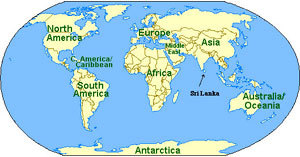
|
|
|
|
|
|
|
|
|
| Sri
Lanka Flag & National Anthem |
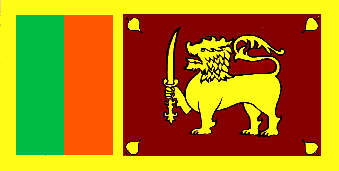 |
|
|
|
The
Government Emblem
The
Government Emblem- Sri Lanka used the British emblem when it was a British
Crown Colony. She continued to use it even after gaining independence
in 1948. This emblem was chosen after the country was declared a Republic
on May 22, 1972. |
| Geographical
Name: |
Sri
Lanka |
| Official
Name: |
The
Democratic Socialist Republic of Sri Lanka |
| Geographical
Location: |
Southern
Asia, island in the Indian Ocean, situated 50 Km or 31 miles off the Southern
tip of India, and is separated from India by the "Palk Strait." |
| Geographic
coordinates: |
Latitude:
5o 55' to 9o 50'N
Longitude: 79o 42' to 81o 52'E
Length: North to South- 434 Km.
East to West - 227 Km. |
|
|
| Topography: |
The
coastal areas and northern half are flat. The central and south-central
are hilly and mountainous. |
| Land
boundaries: |
0
km |
| Coastline: |
1,340
km |
| Area: |
65,610
sq.kms. (25,332 sq.miles) |
| Maritime
claims: |
contiguous
zone: 24 NM
territorial sea: 12 NM
exclusive economic zone: 200 NM
continental shelf: 200 NM or to the edge of the continental margin |
|
|
| Climate: |
No
marked seasons. A special feature is that the hot and humid lowlands and
the salubrious hill country are separated by a few hours motoring. Average
mean temperature along the coast is 26.7oC (80oF) and 19.7oC (66.5oF) in
the hill country. In Colombo, the commercial capital, situated on the west
coast, the temperature varies from 26.4oC (79.5oF) to 27.8oC (82.12oF).
There is rainfall
throughout the year and two main seasons are identified:
South-West
Monsoon: May to July North-East Monsoon: November to January.
A number of
rivers starting from the Central Highlands flow to the sea in a Radial
Pattern.
Longest river
- Mahaveli (331 Km)
Highest waterfall - Bambarakanda (240 m) |
| Elevation
extremes: |
lowest
point: Indian Ocean 0 m
highest point: Pidurutalagala 2,524 m |
| Natural
resources: |
limestone,
graphite, mineral sands, gems, phosphates, clay, hydropower |
| Land
use: |
arable
land: 13.43%
permanent crops: 15.78%
other: 70.79% (1998 est.) |
|
|
| Irrigated
land: |
6,510
sq km (1998 est.) |
| Natural
hazards: |
occasional
cyclones and tornadoes |
| Environment
- current issues: |
deforestation;
soil erosion; wildlife populations threatened by poaching and urbanization;
coastal degradation from mining activities and increased pollution; freshwater
resources being polluted by industrial wastes and sewage runoff; waste disposal;
air pollution in Colombo |
|
|
| Environment
- international agreements: |
party
to: Biodiversity, Climate Change, Desertification, Endangered Species, Environmental
Modification, Hazardous Wastes, Law of the Sea, Nuclear Test Ban, Ozone
Layer Protection, Ship Pollution, Wetlands
signed, but not ratified: Marine Life Conservation |
| Geography
- note: |
strategic
location near major Indian Ocean sea lanes |
| People: |
Sri
Lankan |
| Population: |
19,576,783
|
| Age
structure: |
0-14
years: 25.6% (male 2,559,246; female 2,446,393)
15-64 years: 67.7% (male 6,446,320; female 6,802,515)
65 years and over: 6.7% (male 628,398; female 693,911) (2002 est.) |
|
|
| Population
growth rate: |
0.85%
(2002 est.) |
| Birth
rate: |
16.36
births/1,000 population (2002 est.) |
| Death
rate: |
6.45
deaths/1,000 population (2002 est.) |
| Net
migration rate: |
-1.39
migrant(s)/1,000 population (2002 est.) |
|
|
| Sex
ratio: |
at
birth: 1.05 male(s)/female
under 15 years: 1.05 male(s)/female
15-64 years: 0.95 male(s)/female
65 years and over: 0.91 male(s)/female
total population: 0.97 male(s)/female (2002 est.) |
| Infant
mortality rate: |
15.65
deaths/1,000 live births (2002 est.) |
| Life
expectancy at birth: |
total
population: 72.35 years
female: 75 years (2002 est.)
male: 69.83 years |
| Total
fertility rate: |
1.93
children born/woman (2002 est.) |
| Nationality: |
noun:
Sri Lankan(s)
adjective: Sri Lankan |
| Ethnic
groups: |
Sinhalese
74%, Tamil 18%, Moor 7%, Burgher, Malay, and Vedda 1% |
| Religions: |
Buddhist
70%, Hindu 15%, Christian 8%, Muslim 7% (1999) |
|
|
| Languages: |
Sinhala
(official and national language) 74%, Tamil (national language) 18%, other
8%
note: English is commonly used in government and is spoken competently by
about 10% of the population |
| Literacy: |
definition:
age 15 and over can read and write total population: 90.2%
male: 93.4%
female: 87.2% (1995 est.) |
|
|
| Government: |
Sri
Lanka |
| Country
name: |
conventional
long form: Democratic Socialist Republic of Sri Lanka
conventional short form: Sri Lanka
former: Serendib, Ceylon |
| Government
type: |
A
Democratic Government, with an Executive President and a Parliament elected
by the people. |
| Capital: |
Colombo;
Note - Sri Jayewardenepura Kotte is the legislative capital |
|
|
| Working
Days/Hours: |
Sri Lanka
adopts a five-day week, Monday to Friday. Hours of business are normally:
Government
Departments:
9.00 a.m. to 4.30 p.m.(Monday-Friday)
Mercantile
Offices: 8.30 a.m. to 5.00 p.m.
(Monday - Friday) 8.30 a.m. to 1.00 p.m.
(Saturday)
Shops: 10.00
a.m. to 10.00 p.m.(Monday-Friday) 10.00 a.m. to 8.00 p.m.
(on Saturdays) Closed on Sundays and Mercantile Holidays.
Banks: 9.00
a.m. to 3.00 p.m. (Monday -Friday) Some Banks are open
on Saturdays.
Post Offices:
8.30 a.m. to 5.00 p.m. (Monday - Friday) 8.30 a.m. to 1.00 p.m.(Saturday) |
| Weights
& Measures: |
The
metric system |
| Electricity
Supplies: |
230/240
volts, 50 Hz AC. |
|
|
| Airports: |
The
Bandaranayake International Airport - 29 Km. from the City of Colombo.
Rathmalana Domestic/Military Air port ) |
Colombo
Port: |
The
Colombo Port, graded the twenty-first port in the world, and the hub port
of South Asia, is heading for a fully computerized environment, with Electronic
Data Interchange (EDI) facility operations, as per UN EDIFACT standards
by the year 2003. |
| |
| What
to declare on arrival: |
(1)
All currencies including travellers cheques, drafts, letters of credit and
bills of exchange.
(2) Precious
metals i.e. Platignum, Gold and silver.
(3) Precious
stones and valuable jewellery (in order to facilitate outward clearance).
(4) Firearms
and dangerous weapons.
(5) Drugs
and narcotics.
(6) Flora
and fauna (Sri Lanka is a signatory To the CITES (Convention on International
Trade in Endangered Species).
(7) Any goods
in commercial quantities. |
|
|
| Currency
Regulations: |
Foreign
currency should be encashed only at banks or authorized money changers.
The currency declarations made at entry to the country may be required at
this stage. Credit cards are accepted for payments. |
| Currency
Unit: |
Sri
Lankan Rupee (A Rupee is divided into One hundred Cents) |
National
Tree: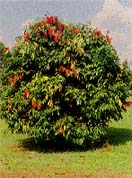 |
The
"Na Tree", botanically known as "Mesua Nagassarium"
was adopted as the National Tree of Sri Lanka on 26 February 1986. |
|
|
National
Flower :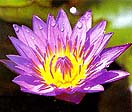 |
"
Nil Manel" - The "Nil Mahanel" flower, botanically known
as "Nympheae Stellata" was declared the National Flower of Sri
Lanka on 26th February 1986. |
Human
Development
Index (HDI): |
During
the post-independence period, Sri Lanka developed into a state with strong
foundations, whose standards of literacy (89 per cent), education, health
(life expectancy 72 years for females and 69 years for males) and nutrition,
are among the best in the developing world. UNDP and UNICEF rate Sri Lanka
as one of the best among developing countries on the Human development Index
basis. |
|
|
| Herbal
Medications: |
Sri
Lanka is one of the most popular destinatinations for lovers of herbal medications
and also having some well-equipped hospitals for those who cross many miles
to experience the tremendous therapeutic value of it, while being in relaxing
and salubrious environs. Please contact via e-mail, the Embassy for details. |
Gems
and Jewellery: |
The Sri Lanka
gemstone industry combines tradition that dates from ancient times with
modern cutting-edge skills that make the island a leader in the processing
of rough stones and the manufacture of gem-studded jewellery.
Sri Lanka
also offers a colourful array of gems including Rubies, Padparadschas,
Alexandrites, Cat's Eyes, Star Sapphires, Star Rubies, Garnets, Spinels,
Aquamarines, Moon Stones, Topaz etc., along with a wide variety of Sapphires-
Blue, Pink, Yellow and Orange. |
|
|
| Major
Exports: |
Garment
Items, Tea, Rubber, Coconut products, spices, Cocoa, Aurvedha and herbal
products, various fruits and vegetable products |
| Spices: |
Sri
Lanka has been known for her spices from time immemorial. Climate and peculiar
geographical characteristics make spices grown in Sri Lanka, bring about
a superior aroma and taste. Cinnamon, pepper, cloves, cardamom, nutmeg,
mace, ginger, etc. are available for export from Sri Lanka. |
























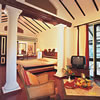








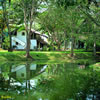


















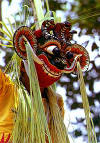
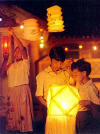



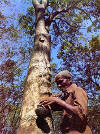


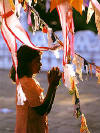











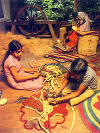
















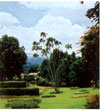
























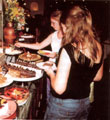
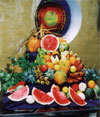

 (C) All Rights Reserved. RASIKA CREATIONS (PVT) LTD - Moscow 2004-2006
(C) All Rights Reserved. RASIKA CREATIONS (PVT) LTD - Moscow 2004-2006